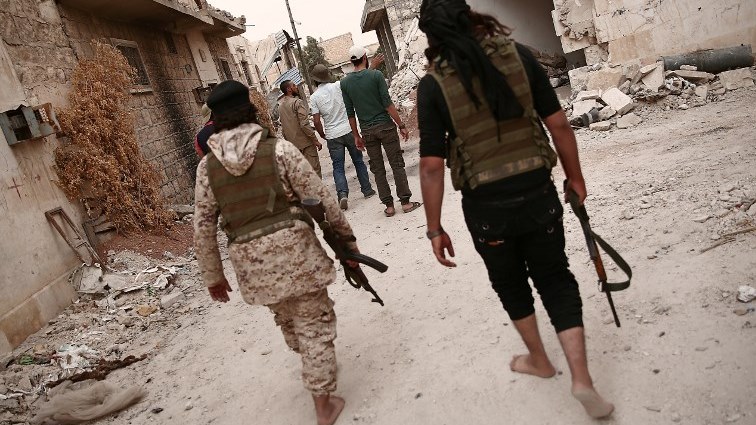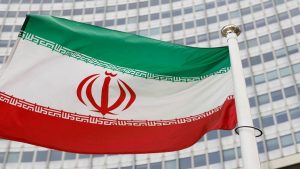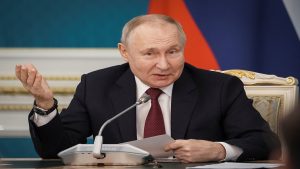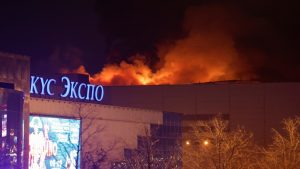A buffer zone separating warring parties is taking shape around Syria’s last rebel bastion Idlib but the success of the Russian-Turkish truce plan lies largely in the hands of jihadists.
The Hayat Tahrir al-Sham (HTS) alliance led by Al-Qaeda’s former Syria affiliate controls more than two-thirds of the front line with government forces where the buffer zone is being established.
Under the September 17 plan agreed by rebel backer Ankara and government supporter Moscow, two key deadlines must be met before they deploy forces to oversee the separation of forces.
A first, Wednesday deadline for the withdrawal of heavy arms appears to have been met by all sides, including the jihadists.
But unlike its Turkish-backed rivals, HTS then faces a second, Monday deadline analysts say is likely to determine the success of the truce — to withdraw all of its fighters from the future buffer zone.
Here is some background on HTS.
HTS first appeared in Syria in January 2012 as Al-Nusra Front, and the government and its Russian ally still refer to it by that name.
Blacklisted as a “terrorist” group by the United Nations, the European Union and the United States, it arrived in Syria as an extension of Al-Qaeda in Iraq.
The group’s current leader, a Syrian who uses the nom de guerre Abu Mohammad al-Jolani, is a veteran of fighting in Iraq.
It maintained its allegiance to Al-Qaeda before splitting with the jihadist network in July 2016 and renaming itself the Fatah al-Sham Front.
In 2017, it dissolved that group to form the backbone of HTS.
Syrian-born jihadists make up around 30,000 of the group’s fighters, according to the Syrian Observatory for Human Rights.
They are “well organised and battle-hardened”, said Syria expert Fabrice Balanche.
Others are foreign, from other parts of the Middle East “but also from Russian-speaking areas, Europe and south Asia,” said Charles Lister, an analyst at the Middle East Institute.
“HTS definitely retains a sizeable foreign fighter component, perhaps comprising at least 20 percent of its total fighting force,” he said.
HTS fighters helped oust government forces from Idlib in 2015 and they now control more than half of the province, including more than two-thirds of the front line.
The group has set up a civil administration that collects customs duties at the Turkish border and taxes traders.
It “derives so much of its power from being the authority over how trade flows into and out of Idlib, which helps fund the group and gives it power beyond its size,” said Nicholas Heras, a researcher at the Center for a New American Security.
Previously, HTS had a presence in rebel areas across Syria, especially near Damascus and in the south. But it has lost that territory as its fighters were evacuated to Idlib in negotiated surrenders.
HTS has consistently been excluded from ceasefires negotiated by the United Nations or Russia.
The group has been the target of air strikes by both Moscow and the US-led anti-jihadist coalition, which have killed several of its senior commanders.
Formerly associated with influential Islamist rebel groups like Ahrar al-Sham and Nureddine al-Zinki, HTS underwent a bloody period of power struggles in 2017 that included battles with former allies, creating resentment that persists today.
In early 2018, Ahrar al-Sham and Nureddine al-Zinki announced their Turkish-backed merger to counter HTS’s growing power.
They joined four other rebel factions in early August to form a broader alliance — the National Liberation Front.
On August 22, the reclusive Jolani broke a long silence to reiterate that HTS was determined to repel any offensive by Damascus.
“Just thinking about surrendering to the enemy and handing over weapons is an act of treason,” he said.
Government troops had been massing around Idlib in preparation for a major assault, but it was averted by last month’s Russian-Turkish truce deal.
The agreement foresees a 15- to 20-kilometre (nine- to 12-mile) wide buffer zone ringing rebel-held territory that would be free of both heavy weapons and “radical fighters,” taken to mean HTS and other jihadists.
HTS has yet to formally respond to the deal, but the jihadists appear to have quietly met its first deadline, withdrawing their heavy weapons by Wednesday.
It remains unclear if they will comply with the second deadline, under which they are expected to pull out their fighters from the demilitarised area by Monday.






